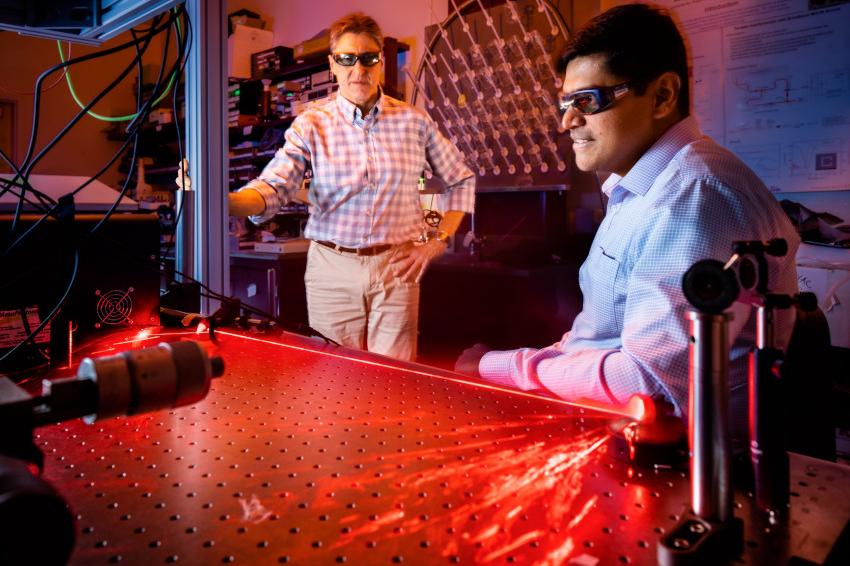Fast beam steering with metasurfaces
31.03.2023 - New approach to dynamically control incoherent light sources and manipulate their properties.
For a first time, a Sandia National Laboratories research team has demonstrated the ability to dynamically steer light pulses from conventional, incoherent light sources. This ability to control light using a semiconductor device could allow low-power, relatively inexpensive sources like LEDs or flashlight bulbs to replace more powerful laser beams in new technologies such as holograms, remote sensing, self-driving cars and high-speed communication. “What we’ve done is show that steering a beam of incoherent light can be done,” said Prasad Iyer.
Incoherent light is emitted by many common sources, such as an old-fashioned incandescent light bulb or an LED bulb. In the team’s research, they manipulated incoherent light by using artificially structured metasurfaces, made from tiny building blocks of semiconductors that can be designed to reflect light very efficiently. Although metasurfaces had previously shown promise for creating devices that could steer light rays to arbitrary angles, they also presented a challenge because they had only been designed for coherent light sources. Ideally, one would want a semiconductor device that can emit light like an LED, steer the light emission to a set angle by applying a control voltage and shift the steering angle at the fastest speed possible.
The researchers started with a semiconductor metasurface that had embedded tiny quantum dots. By using a control optical pulse, they were able to change, or reconfigure, the way the surface reflected light and steer the light waves emitted from the quantum dots in different directions over a 70-degree range very fast. Similar to laser-based steering, the steered beam restrained the tendency of incoherent light to spread over a wider viewing angle and instead produced bright light at a distance. A feat previously considered impossible, the team’s proof-of-principle work paves the way for developments in the fields of nanophotonics and ultrafast optics. The ability to dynamically control incoherent light sources and manipulate their properties offers a wide range of applications.
One low-power use would be to brighten military helmet screens used to overlay maps or blueprints over ordinary vision. “In applications where space is valuable,” Iyer said, “steering light emission with low-size-and-weight metasurface-LED displays could be made possible in the future with this technology. We can use the light emitted in a better way rather than just turning them off and on.” The technique could also provide a new kind of small display that can project holographic images onto eyeballs using low-power LEDs, a capability of particular interest for augmented and virtual reality devices. Other uses could be in self-driving cars where lidar is used to sense objects in the path of the car.
In terms of expressions of interest, the team has had several inquiries from commercial sources, said Igal Brener, lead scientist on the project. “A commercial product could be 5 to 10 years out, especially if we want to have all the functionality on-chip,” Brener said. “You wouldn’t use a control optical pulse to impart the changes in the metasurface needed to steer the light, but rather you would do this control electrically. We have ideas and plans, but it’s still early. Imagine an LED light bulb that can emit light to follow you. Then you wouldn’t waste all that illumination where there’s nobody. This is one of the many applications that we dreamed about with DOE years ago for energy efficiency for office lighting, for example.” Similarly, tamed light may one day offer benefits in scenarios where focused illumination is only needed in a specific area of interest, such as surgery or in autonomous vehicles. (Source: Sandia Labs)
Link: Center for Integrated Nanotechnologies, Sandia National Laboratories, Albuquerque, USA
Contact
Sandia National Laboratories
1515 Eubank SE
Albuquerque, NM 87123
United States
+1 505 844-8066







